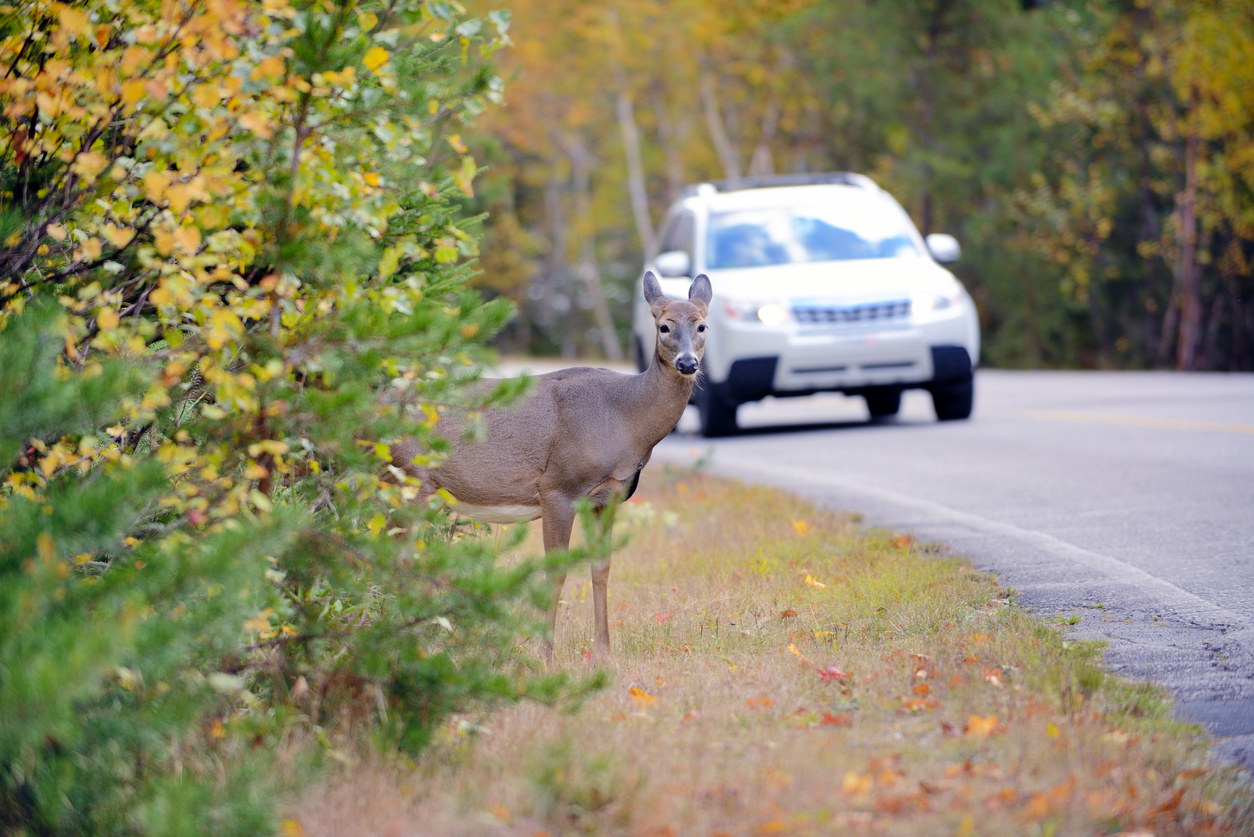Autumn is here in all its colourful glory. That means a chill in the morning air, leaves on the ground—and wildlife suddenly jumping on the road in front of you.
Wildlife collisions account for half of all rural crashes in Alberta. And October through January is the highest-risk period for animal and vehicle collisions in Alberta. owing largely to reduced daylight hours, increased road salt, and erratic wildlife behaviour. Studies have shown the most dangerous hours are between 7 p.m. and 11 p.m., while the peak month for these incidents is November.
“A collision with a large animal can seriously harm both a vehicle and its occupants,” says Dennis Porter, Senior Instructor, AMA Driver Education. “Using extra caution and actively scanning when you’re on the highway, in rural areas, or driving at dusk will greatly reduce your risk.”
Porter says that 80% of Alberta wildlife collisions involve deer. The hoofed animals are in the middle of mating season, and that means they’re more unpredictable.
“That’s not to say there aren’t any other wildlife that can also cause damage,” Porter notes, citing coyotes, mountain goats and moose. “They might be trying to get to a water supply on the other side of a road, or you might see them licking salt on the pavement.” And they’re not just on the highway; you can sometimes see wild animals on urban roads as well.
MORE TO READ
All the reasons why you should switch to winter tires before the first snowfall
Being extra cautious during this time is imperative. Porter suggests actively scanning the road and keeping an eye on the ditch if you have to drive at night. Driving a little slower will also give you an improved braking time to avoid a collision. “If you’re speeding, it’s tough to make an evasive manoeuvre,” Porter adds. “It’s really about having the vehicle under control if you do encounter wildlife. At a lower rate of speed, your car is going to be easier to handle and easier to slow down, thus making it safer for you, the animal and other vehicles on the road.”
It also helps with the pocketbook. Wildlife collisions are among the most expensive claims in the province, at an average of about $8,000 per collision. With so much on the line, it pays to make a few simple steps before heading out on fall road trips.
“Keep your headlights and windshield as clean as you can,” Porter suggests. “And make sure you’ve got lots of washer fluid. Be focused on the task at hand when driving to better protect your vehicle, passengers and the wildlife around you.”
5 WAYS TO AVOID HITTING AN ANIMAL
The experts at AMA Driver Education suggest a few smart driving habits to prevent wildlife collisions
1. Be vigilant. Actively scan for animals in both rural and urban areas. With urban encroachment and expansion into habitats, wildlife can be found anywhere.
2. Pay attention to posted signs. Yellow diamond shaped signs indicate areas where animals are known to cross, so extra caution should be exercised.
3. Be light-smart. You can’t stop for what you can’t see. Keep your headlights clean and use your high beams, when safe to do so, to better illuminate ditches.
4. Watch for groups. The animal you see isn’t necessarily the one you’ll hit. Animals often travel in groups, so if you see one animal near the road or crossing, others are likely to follow. Slow down and use your horn in short bursts.
5. React strategically. If an animal suddenly crosses your path, brake firmly—but don’t leave your lane, which may cause a collision with another vehicle or send your vehicle over an embankment. If you can’t stop for a large animal, steer toward its hindquarters: Heading in the same direction as the animal will only increase your chance of a crash.
MORE TO READ
Smart driving strategies for navigating Alberta’s rural roads
